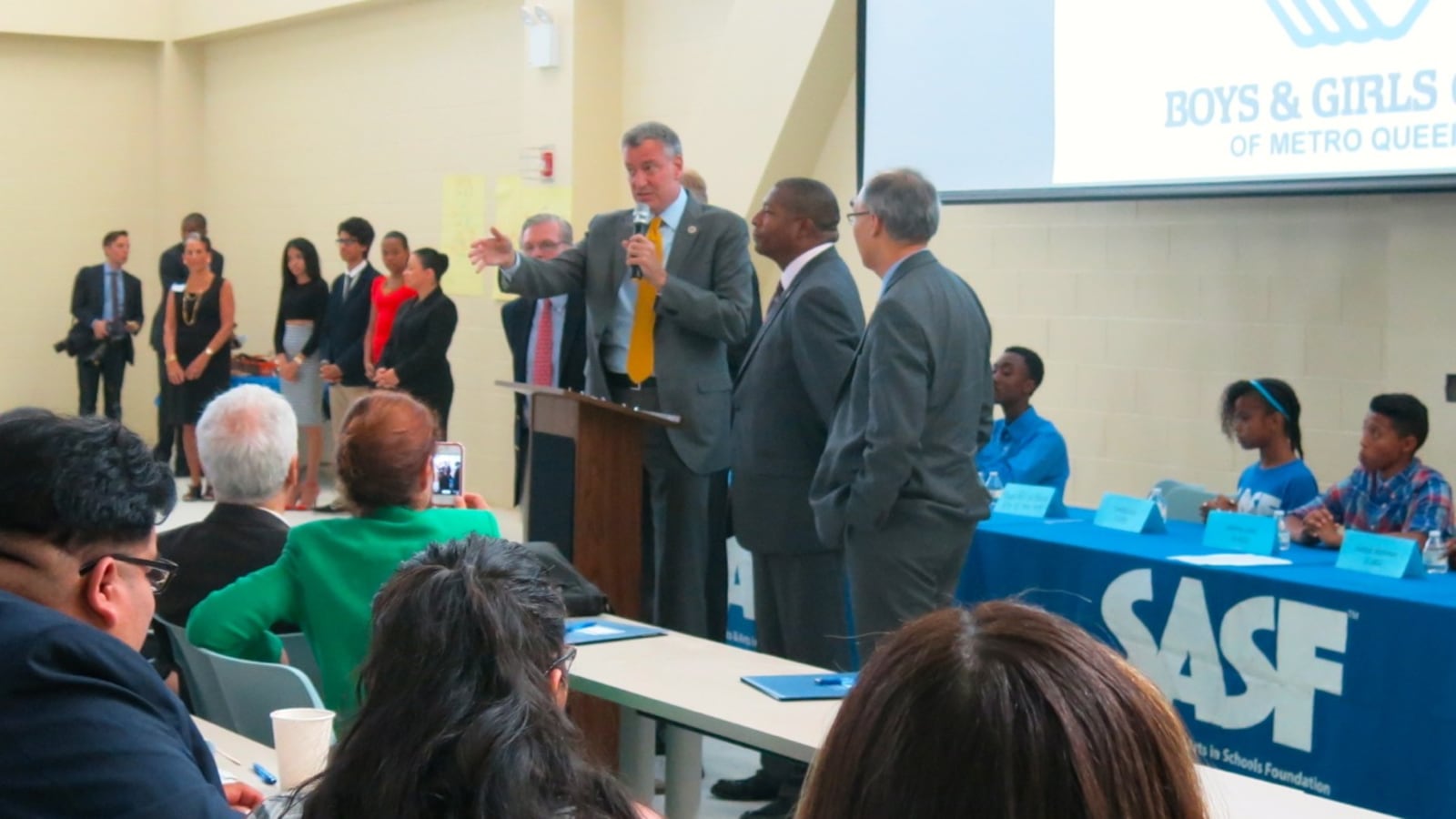Mayor Bill de Blasio knows what will happen if middle schoolers don’t find after-school programs worthwhile. They’ll vote with their feet, and stop showing up.
The mayor issued this friendly warning to new after-school employees on Monday. The group was smaller and quieter than the crowd of pre-K teachers he rallied last week, but the message was the same: We’re counting on you.
“It’s my job to get you the support, but then you go in. You’re the boots on the ground,” de Blasio said, after recapping his efforts to secure funding for the largest expansion of after-school offerings in the city’s history.
The 130 teachers and site directors gathered at the Boys and Girls Club of Metro Queens this week are all new employees of the Sports & Arts in Schools Foundation, one of 108 organizations receiving city funds to oversee after-school programming in middle schools when classes begin next week.
Alongside expanded pre-K offerings, de Blasio positioned after-school programs as a centerpiece of his mayoral campaign and then his efforts as mayor to improve the city’s education system. While the push for after-school expansion has not been as high-profile as the battle to fund and prepare thousands of new full-day seats in pre-K, de Blasio made clear today that expectations for the after-school rollout are still high.
“Many of the things we’ll bringing into the schools in the coming weeks will create a new kind of school system, a new kind of young people,” he said, citing middle school after-school programming (newly renamed School’s Out NYC, or SONYC), pre-K, and his administration’s investment in community schools.
The city is putting $145 million in state funding toward SONYC this year. That number will jump to $190 million during the 2015-16 school year, and the city’s goal is to offer all sixth, seventh, and eighth graders access to after-school programming at schools or community-based organizations by the end of the two years.
De Blasio estimated that the number of students served this school year will nearly double, from 50,000 to 100,000. The number of middle schools that offer after-school programs will jump from 231 to 562.
As the start of the school year approaches, site directors are still making decisions that are likely to determine whether they can convince middle schoolers to enroll and then stick around.
Rising ninth-grader Brandon Joseph, who spoke on a student panel before de Blasio arrived, is one of the 50,000 students who already has a sense of how those decisions influence their experiences after school.
When one of the new site directors asked Joseph and five other after-school veterans whether students should have a say in how they spend the extra time, Joseph, who attended P.S. 42 in Queens, immediately spoke up in favor of choice.
“It helps us be independent. That’s what we learn by choosing what we want,” he said.
“It should be a mix,” Cordelia King, who attended I.S. 285, chimed in. “If there’s too much freedom, it can be out of control.”

